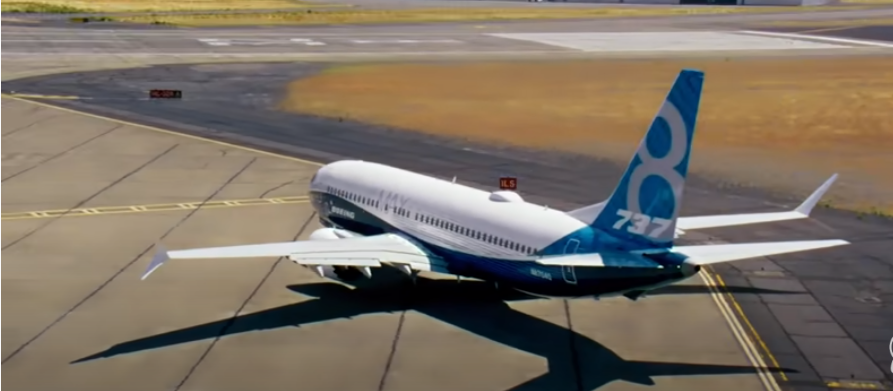
WASHINGTON—The FAA’s proposed steps for operators to clear Boeing 737 MAXs for service include separating wire bundles deemed to be noncompliant with regulations and conducting “readiness” flights to ensure the long-grounded aircraft are airworthy, a draft notice of proposed rulemaking (NPRM) made public Aug. 3 reveals.
The wire-bundle issue, discovered during regulators’ comprehensive review of the MAX’s design and certification, concerns horizontal stabilizer trim arm and control wiring that runs the length of the aircraft. The FAA found that the wiring needs to be separated in 12 places to meet 2007 regulatory changes put in place to prevent wiring failures from creating hazards.
The agency ordered Boeing to fix the issue on new-production MAXs and develop instructions for in-service aircraft.
Many MAX operators planned to take advantage of the ongoing grounding and make the wiring changes before returning their MAXs to revenue flying, using service instructions Boeing issued on June 10. What was not clear: whether the FAA would require operators to address the issue before the MAXs flew again or give them the flexibility of a longer window for compliance, which is typical for many airworthiness directives. The NPRM confirms that the wiring work is one of several steps that must be completed on each existing MAX before returning to revenue service.
Because Boeing made the in-service modification work package available nearly two months ago and the FAA tentatively approved its contents, the agency’s wiring mandate is not expected to add time to MAX return-to-service preparation.
Updating MAX wiring, while an important regulatory compliance issue, is an ancillary change in the package of upgrades that will end what will likely be an 18-month-plus fleet grounding. The major changes are installing updated flight control computer (FCC) software that modifies the MAX’s maneuvering characteristics augmentation system (MCAS); new “MAX Display System” software that gives pilots more information on anomalies; and putting pilots through new, updated training.
MCAS, implicated as a central factor in two fatal 737 MAX 8 accidents that led regulators to ground the model in March 2019, commands automatic horizontal stabilizer inputs to help the MAX handle like its 737 Next Generation predecessor. The software changes ensure MCAS functions as intended, but does not confuse or overwhelm pilots, and only activates when intended. Its original design, which relied on data from a single angle of attack (AOA) sensor, left it susceptible to a single-point failure. Boeing assumed pilots would recognize and react to unneeded MCAS inputs quickly, but the two MAX accidents, Lion Air Flight 610 in October 2018 and Lion Air Flight 302 in March 2019, showed the company was wrong.
The NPRM and a related FAA summary of its MAX review emphasize that work still remains. The largest piece is having regulators and line pilots validate proposed changes to MAX pilot training. A Joint Operations Evaluation Board (JOEB) review, including participation from Brazilian, Canadian, European, and U.S. pilots and regulators, must be done, followed by an FAA-led Flight Standardization Board (FSB) report that will establish minimum training curriculum for MAX pilots. COVID-19 pandemic-related travel restrictions have presented issues for the JOEB work, which would normally be done in one location. The FAA on July 21 said “final planning is underway” for the JOEB and FSB pilot evaluations but did not offer details on timing.
Among the major training changes expected to be adopted: mandatory simulator sessions for all prospective MAX pilots. Previously, pilots with 737 type ratings could transition to the MAX following computer-based differences training. The FAA also is proposing changes to seven non-normal checklists (NNCs): runaway stabilizer; stabilizer trim inoperative; airspeed unreliable; altitude disagree; AOA disagree; speed trim fail; and horizontal stabilizer out of trim. Some changes are linked to the FCC modifications, while others stem from human factors research that found problems with their language or logic. It also is adding an eighth NNC, indicated airspeed disagree, to the airplane flight manual.
The FAA’s analysis broke the MAX safety issues into seven categories: MCAS relying on a single AOA sensor; MCAS’s repetitive commands; MCAS’s stabilizer-trim adjustment authority; flight crew recognition and response; how the MAX alerted pilots of an AOA disagree; other possible horizontal stabilizer failures; and MCAS-related maintenance procedures. FAA’s directive and the pending training plan addresses each of them.
A required “readiness flight” will validate the software upgrades on each aircraft.
Fixes to the single-AOA sensor issue include the updated FCC software “to eliminate MCAS reliance on a single AOA sensor signal by using both AOA sensor inputs and changing flight control laws to safeguard against MCAS activation due to a failed or erroneous AOA sensor,” the FAA said. Neither the NPRM nor the FAA summary discuss adding additional AOA sensors.
MAX training will be finalized separately and will include a public-comment period. Once the training program is approved, the FAA will issue an airworthiness directive mandating the return-to-service steps. The agency is not working with a time line. The NPRM is in final pre-publication stages and should be out in the coming days. It stipulates a 45-day comment period, meaning the FAA will not publish a final version until mid-September at the earliest. MAX operators have said they will need at least a month, and likely more, to upgrade their MAXs, ensure they are ready to fly following extended stints on the ground, work them back into flight schedules, and train pilots.





